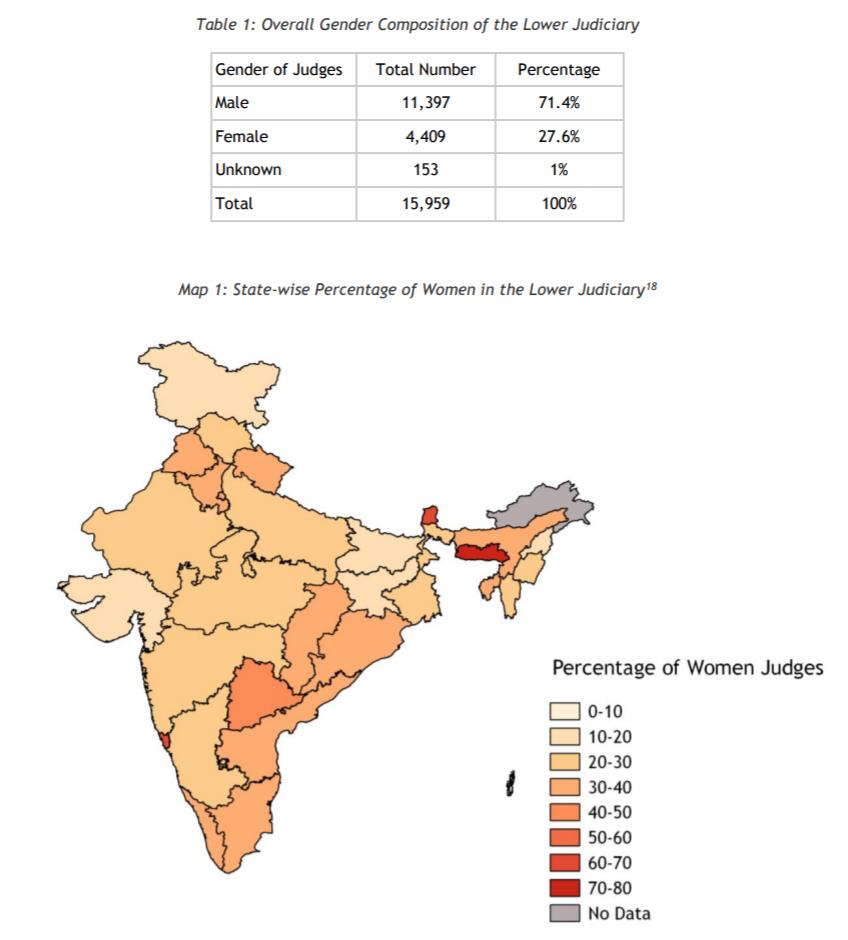Tags:

Female judges make up less than 28% of the lower judiciary, according to the Vidhi Centre for Legal Policy's study on gender diversity in the lower judiciary.
Vidhi studied 10 Indian states to arrive at its preliminary findings. Meghalaya, Goa and Sikkim - the three smallest states with a collective total of 103 judges in the lower judiciary had more than 60 per cent female judges. Telangana and Puducherry had between 40-60% female judges.
The states with the lowest percentage of female judges were:
- Bihar: 11.52%
- Jharkhand: 13.98%
- Gujarat: 15.11%
- Jammu & Kashmir: 18.62%
- Uttar Pradesh - 21.4%
Vidhi's other finding was that the percentage of women in the three hierarchical tiers of the lower judiciary decreases as we go from the bottom tier to the top, and that there was a moderate correlation between sex ratios in states and the gender imbalance on the bench.
The study recommends that the Union law ministry, which never maintained data on women in the judiciary, should start doing so in order to drive public discourse:
Mainstream discourse tends to focus on judicial appointments either in the context of the tussle between the judiciary and executive, or vacancies and delay. There is an urgent need to expand this discourse so it can also accommodate concerns over diversity and equitable social composition.
This need is highlighted by several instances where key stakeholders have failed to adequately address such concerns. In 2015, during hearings related to the National Judicial Appointments Commission, the Supreme Court Women Lawyers Association (‘SCWA’) presented statistics regarding the poor representation of women in the higher judiciary to the Supreme Court.44 It also submitted suggestions to the Court to consider meritorious women for adequate representation in higher judicial appointments. The then Chief Justice of India J.S. Khehar suggested that the proportion of women judges should be the same as the proportion of women lawyers. In response, the SCWLA pointed out that the latter would be an inappropriate benchmark, since women face a lot of problems in practising in court. As is evident from the reasons outlined above, the very factors that cause women to drop out of litigation arguably affect the gender imbalance in the judiciary. But the fact that the Chief Justice of India did not recognise this underscores the need for mainstream discourse to become more accommodating of concerns over diversity
threads most popular
thread most upvoted
comment newest
first oldest
first
Come on women! Storm the courts! Get into litigation...the courts are in a comfortable state of denial.
Kyun dar rahe ho?
Woh tifl kya gire jo ghutno ke bal chale!
threads most popular
thread most upvoted
comment newest
first oldest
first